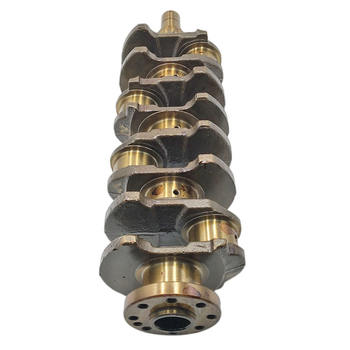Introduction: The Unsung Hero of Engine Design
When it comes to engine design, the crankshaft often takes a backseat to flashier components like pistons or cylinder heads. But as it turns out, the crankshraft is an unsung hero in the world of automotive engineering. Have you ever wondered how crankshaft design impacts engine packaging and vehicle layout? Read on to find out.
The Role of Crankshaft Design in Engine Packaging
In my experience, many people underestimate the importance of crankshaft design when it comes to engine packaging. A well-designed crankshaft can significantly reduce engine size and weight while maintaining – or even improving – performance. Here's the thing: a more compact engine means more space for other vehicle components or improved aerodynamics.
Balancing Performance and Space Efficiency
One key aspect of crankshaft design is finding the right balance between performance and space efficiency. For instance, using a flat-plane crankshaft instead of a traditional cross-plane design can help reduce engine size and weight. However, this may lead to uneven firing intervals, which can impact performance and noise levels. To tackle this challenge, engineers must carefully consider factors like crankshaft counterweight placement, material selection, and bearing design.
How Crankshaft Design Affects Vehicle Layout
Interestingly enough, crankshaft design can also influence vehicle layout. For example, a rear-engine vehicle, like the iconic Porsche 911, requires a compact, lightweight crankshaft to optimize weight distribution and handling. On the other hand, front-engine vehicles may benefit from longer crankshafts for better torque and smoother power delivery.
The Impact on Vehicle Dynamics
Many experts agree that crankshaft design plays a significant role in vehicle dynamics. A well-designed crankshaft can contribute to better engine balance, reducing vibrations and improving overall driving comfort. Additionally, a more balanced engine allows for better suspension tuning, enhancing ride quality and handling.
Practical Applications: Optimizing Crankshaft Design
So, how can you apply these insights to optimize crankshaft design in your own projects? Here are some actionable tips:
Conclusion: Embracing the Power of Crankshaft Design
In conclusion, crankshaft design plays a crucial role in engine packaging and vehicle layout. By understanding the impact of crankshaft design on performance, space efficiency, and vehicle dynamics, engineers can make informed decisions to optimize their engine designs. So, the next time you're working on an engine project, don't forget to give the crankshaft the attention it deserves – your vehicle layout will thank you.




